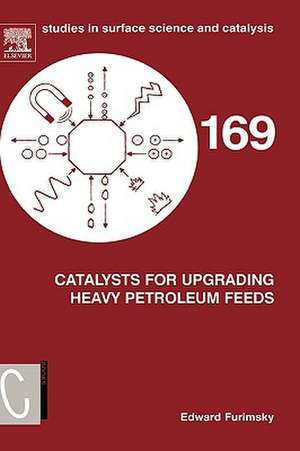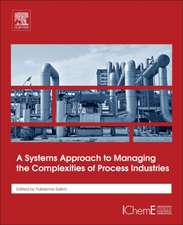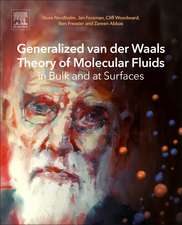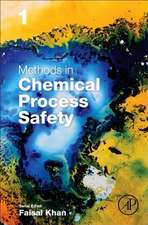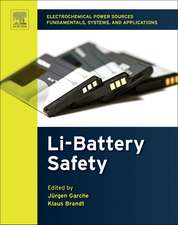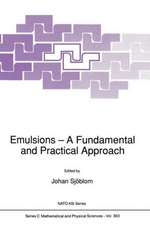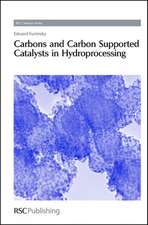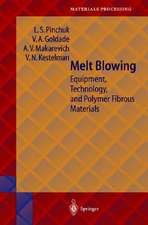Catalysts for Upgrading Heavy Petroleum Feeds: Studies in Surface Science and Catalysis, cartea 169
Autor Edward Furimskyen Limba Engleză Hardback – 31 iul 2007
- Comprehensive and most recent information on hydroprocessing catalysts for upgrading heavy petroleum feeds.- Compares conventional, modified and novel catalysts for upgrading a wide range of heavy petroleum feeds.- Comparison of conventional with non-conventional hydroprocessing, the latter involving soluble/dispersed catalysts and biocatalysts. - Development and comparison of mathematical models to simulate performance of catalytic reactors including most problematic feeds.- Residues upgrading by catalytic cracking in comparison to hydroprocessing.
Din seria Studies in Surface Science and Catalysis
- 9%
 Preț: 885.10 lei
Preț: 885.10 lei - 27%
 Preț: 1304.37 lei
Preț: 1304.37 lei - 27%
 Preț: 1302.25 lei
Preț: 1302.25 lei - 27%
 Preț: 1302.53 lei
Preț: 1302.53 lei - 27%
 Preț: 1297.21 lei
Preț: 1297.21 lei - 27%
 Preț: 1290.46 lei
Preț: 1290.46 lei - 27%
 Preț: 1303.81 lei
Preț: 1303.81 lei - 27%
 Preț: 1296.65 lei
Preț: 1296.65 lei - 27%
 Preț: 1294.66 lei
Preț: 1294.66 lei - 27%
 Preț: 1305.91 lei
Preț: 1305.91 lei - 27%
 Preț: 1305.08 lei
Preț: 1305.08 lei - 27%
 Preț: 1433.80 lei
Preț: 1433.80 lei - 27%
 Preț: 1301.30 lei
Preț: 1301.30 lei - 27%
 Preț: 1317.26 lei
Preț: 1317.26 lei - 27%
 Preț: 1191.02 lei
Preț: 1191.02 lei - 27%
 Preț: 1186.09 lei
Preț: 1186.09 lei - 27%
 Preț: 1185.10 lei
Preț: 1185.10 lei - 27%
 Preț: 1309.57 lei
Preț: 1309.57 lei - 9%
 Preț: 1778.96 lei
Preț: 1778.96 lei - 23%
 Preț: 1200.06 lei
Preț: 1200.06 lei - 39%
 Preț: 1079.57 lei
Preț: 1079.57 lei - 28%
 Preț: 1055.25 lei
Preț: 1055.25 lei - 14%
 Preț: 2164.67 lei
Preț: 2164.67 lei - 9%
 Preț: 1161.45 lei
Preț: 1161.45 lei
Preț: 1185.10 lei
Preț vechi: 1623.43 lei
-27% Nou
Puncte Express: 1778
Preț estimativ în valută:
226.78€ • 242.49$ • 189.08£
226.78€ • 242.49$ • 189.08£
Carte tipărită la comandă
Livrare economică 18 aprilie-02 mai
Preluare comenzi: 021 569.72.76
Specificații
ISBN-13: 9780444530844
ISBN-10: 0444530843
Pagini: 404
Dimensiuni: 165 x 240 x 30 mm
Greutate: 0.75 kg
Editura: ELSEVIER SCIENCE
Seria Studies in Surface Science and Catalysis
ISBN-10: 0444530843
Pagini: 404
Dimensiuni: 165 x 240 x 30 mm
Greutate: 0.75 kg
Editura: ELSEVIER SCIENCE
Seria Studies in Surface Science and Catalysis
Public țintă
Researchers in petroleum research institutes and petroleum refining industries, graduate students and consultants in the petroleum industry.Cuprins
I. IntroductionII. Properties of Heavy FeedsIII. Properties of Catalysts for Hydroprocessing Heavy FeedsIV. Selection of Reactors for Hydroprocessing ResearchV. Development and Testing of CatalystsVI. Hydroprocessing ReactionsVII. Deactivation of Catalysts VIII. Selection of Catalysts for Commercial Hydroprocessing ReactorsIX. Patent Literature on Hydroprocessing Catalysts and Reactors X. Spent Hydroprocessing CatalystsXI. Hydroprocessing of Vgo and Dao for Production of Lubricants XII. Non-Conventional Catalytic Upgrading of Heavy FeedsXIII. Residues Upgrading by Catalytic Cracking XIV. Carbon Rejecting ProcessesXV. Uncommon ProcessesXVI. ConclusionsXVII. References
